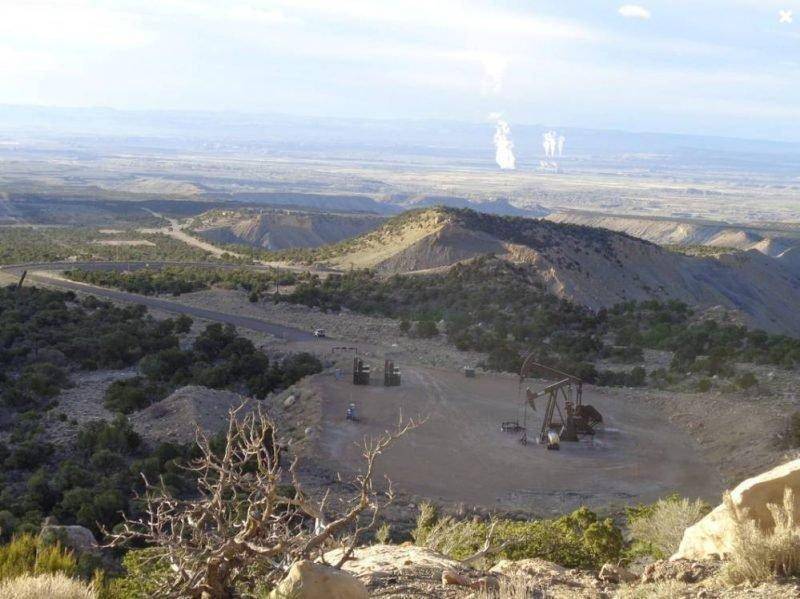By Ray Petersen
Mining and mineral (including fluid minerals) resources are identified in the Emery County General Plan as vital resources with regard to economic growth and stability. The Plan states that the County supports continued access to these natural resources. Specifically these resources include coal, uranium, gypsum, natural gas, and oil.
At the initial scoping meeting hosted by the Emery County Public Lands Council (PLC) in 2009, the stakeholders in attendance were asked to identify areas where there would be conflict with conservation designation and the resources they represented. Only areas not within the Desolation Canyon, Labyrinth Canyon and San Rafael Swell were identified. The locations of these resources were really the major factor in determining where conservation designations could be considered. The PLC was not willing to eliminate or adversely impact any current resource use by making conservation designations.
Most of the coal reserves are outside the areas affected by HR 5727 and S 2908. However, the Lila Canyon Mine is adjacent to the Turtle Canyon Wilderness Study Area (WSA). The PLC realigned a boundary near the mine, which is more easily recognizable on the ground than the current boundary, and is also further away from the mine.
Gypsum resources are plentiful along the western edge of the Swell and several active leases exist. One active mine is within the planning area. The PLC was careful to not include these locations within the conservation designations.
Historic uranium exploration has probably produced more activity within and around the San Rafael Swell than any other resource. Many of the popular OHV trails are remnants of that exploration. Current status of uranium resources in the area is nominal. Recent exploration activity included 19 drill sites within the interior of the Swell. Like most mineral industries, exploration information is proprietary in nature and not readily shared. But a statement to the effect of “we won’t be back” is indicative of the status of this resource. More readily available and “hotter” ores throughout the world market contribute to the low potential for our local product.
A report included in the Bureau of Land Management Resource Management Plan process identifies the San Rafael Swell as having low oil and gas potential. However, the same report identifies areas to the West, North and East as high O&G potential. Again, the PLC was careful to not include areas with high potential in proposed conservation designations.
Emery County consulted Western Energy Alliance (WEA), headquartered in Denver, early in the planning process. WEA is an Oil and Gas industry advocacy group representing clients in the Western United States. After reviewing a map showing proposed designations in the Lands Bill, WEA stated that “nothing in the proposal impacts our clients.”
Besides industry stakeholders, Emery County conferred with Utah Geologic Survey regarding mineral resource potential. UGS confirmed the position of the stakeholders. Recoverable, marketable, mineral resources are minimal within the interior of the Swell.
The Oil and Gas industry in Utah endured an unfortunate decision by the Secretary of the Interior a few years ago when he pulled 27 leases which, in his opinion, would have impacted the visitor experience in national parks and other sensitive areas. Basically, the rational was that certain activities outside the boundaries of these areas should not be visible to visitors. He did not think that as tourists drove through Arches or Canyonlands in their gasoline powered, oil lubricated vehicles, their experience should be hindered by visually encountering an oil rig!? An extremely valuable component of the strategy of the Emery County Land Use Bill addresses the practice of establishing buffer zones around conservation areas. The aim is to protect mineral resources outside of the wilderness and NRA and make them more attractive for development. Language from the bill states that:
(d) Adjacent Management.—
(1) IN GENERAL.—Congress does not intend for the designation of the wilderness areas to create protective perimeters or buffer zones around the wilderness areas.
(2) NONWILDERNESS ACTIVITIES.—The fact that nonwilderness activities or uses can be seen or heard from areas within a wilderness area shall not preclude the conduct of those activities or uses outside the boundary of the wilderness area.
This language clarifies what activity takes place in specific areas. Mining and mineral industries will be assured of fair and consistent regulation of areas they wish to invest in.

